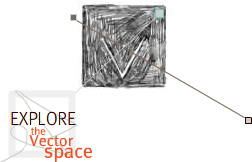Digital Dynamics Across Cultures
Design by Alessandro Ceglia
Editor's Introduction
Digital Dynamics Across Cultures re-imagines the work of anthropology in the age of digital reproduction, and, by extension, explores the cross-cultural implications of several seeming truisms of the electronic era. While the libertarian impulses and voices fueling the gold rush mentality of Silicon Valley's dot.com period often insisted that "information wants to be free," Kim Christen here reveals the peculiarly Western bias of such claims. Drawing on materials collected in more than a decade of field work, Christen and her collaborators have created a complex, multimedia artifact that moves far beyond Discovery Channel-type explorations of cultural difference. Instead, the project models the unique systems of belief and of shared ownership that underpin Warumungu knowledge production and reproduction, including a system of "protocols" that limit access to information or to images in accordance with Aboriginal systems of accountability.
The site is experiential, but it does not presume cultural experience to be something we should take for granted as a birth right of the digital age. Digital Dynamics Across Cultures does not invite the (Western) viewer to "become Aboriginal" or to assume another's identity, that avatar-based standard of so many products of digital culture. Rather, the experiences it constructs are partial, embedded, and provisional, barring access to specific images or performances, in a manner consistent with the logics or protocols of the Warumungu people. As such, the site stages a series of complex negotiations that trouble easy binary assumptions about the nature of intellectual property, the boundaries between the public and private, and the relationship of self to both place and history.
Digital Dynamics Across Cultures denies the tourist's gaze, refusing to fix the Warumungu as objects for our consumption, either embalmed in a distant past or locked in an electronic present. The algorithmically-driven database structure of the project means that only a small slice of its vast contents is available during any one visit. The materials available for exploration shift and mutate with each click of the refresh button, highlighting the ephemeral nature of digital forms and of any sense that we might systematically be able to know "the Other." The project also demands an ongoing process of collaboration and dialogue between Christen and the Warumungu, as the protocols it models require that the database be consistently updated to reflect changes in the community. Such a process underscores that the mutability of digital forms reaches far beyond the database to the lived worlds we all inhabit.



